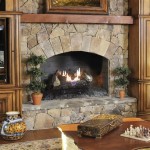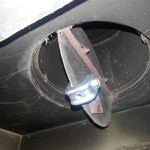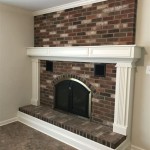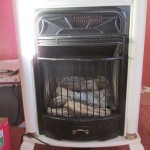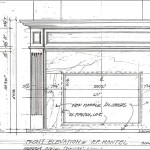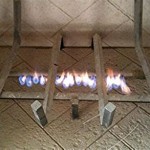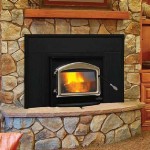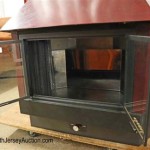How To Clean A Wood Burning Fireplace Chimney
Maintaining a wood-burning fireplace involves consistent cleaning and inspection, particularly concerning the chimney. Creosote, a byproduct of burning wood, accumulates inside the chimney flue and is highly flammable. Regular cleaning minimizes the risk of chimney fires and ensures the safe and efficient operation of the fireplace.
The frequency of chimney cleaning depends on the frequency of fireplace use and the type of wood burned. Generally, an annual inspection is recommended, and cleaning should occur when creosote buildup reaches 1/8 inch or more. Ignoring this critical maintenance can lead to hazardous conditions and costly repairs.
Preparing for the Chimney Cleaning Process
Prior to commencing the chimney cleaning process, necessary preparations ensure safety and minimize mess. Gathering the appropriate tools and personal protective equipment is paramount. These preparations also involve understanding the structure of the chimney and its components.
Acquire the following tools: a chimney sweep brush that matches the size and shape of the flue (round or square), chimney brush extension rods, a drop cloth or plastic sheeting, a shop vacuum with a HEPA filter, a flashlight, a screwdriver, and a wire brush for cleaning the firebox. In terms of personal protective equipment, wear safety glasses, a dust mask or respirator, gloves, and old clothing to protect against dust and debris.
Before starting, ensure the fireplace is not in use and has been completely cool for at least 24 hours. Remove any grates, andirons, or decorative items from the firebox. Seal the fireplace opening with plastic sheeting or a drop cloth secured with tape to prevent soot and debris from entering the room. This protective barrier is crucial for maintaining a clean working environment.
Examine the chimney from the outside for any signs of damage, such as cracks, loose bricks, or missing mortar. Note any obstructions, such as bird nests or tree branches, that may be blocking the flue. Identifying these external issues beforehand can prevent complications during the cleaning process and highlight potential maintenance needs.
Ascertain the type of chimney your fireplace utilizes. Common types include masonry chimneys (brick or stone) and metal chimneys (single-wall or double-wall). The type of chimney influences the type of brush required for effective cleaning. Metal chimneys often require a softer, more flexible brush to prevent damage to the liner. Consult the fireplace or chimney manufacturer's documentation for specific recommendations.
Cleaning the Chimney from the Firebox
Cleaning the chimney from the firebox involves working from the inside of the house, pushing the chimney brush upwards through the flue. This method is suitable for homeowners comfortable working in confined spaces and is applicable to most standard fireplaces. Adherence to a systematic approach ensures a thorough cleaning.
Begin by attaching the chimney brush to one extension rod. Carefully insert the brush into the flue opening above the damper. Push the brush upwards, using a twisting motion to scrub the creosote from the chimney walls. Continue pushing the brush upwards, adding extension rods as needed until the brush reaches the top of the chimney.
Once the brush has reached the top, continue the twisting and scrubbing motion while slowly pulling the brush back down. Repeat this process several times, overlapping each stroke to ensure complete coverage of the chimney walls. Pay particular attention to areas where creosote buildup is heaviest, often near bends or changes in flue diameter.
After completing the chimney cleaning, remove the brush and extension rods from the firebox. Carefully remove the plastic sheeting or drop cloth, being mindful to prevent the spread of soot and debris. Use the shop vacuum with a HEPA filter to thoroughly clean the firebox, removing any remaining creosote, ash, and debris.
Examine the damper for any signs of damage or corrosion. Use a wire brush to clean the damper plate, removing any accumulated soot or creosote. Ensure the damper opens and closes smoothly. If the damper is damaged, consider replacing it to ensure proper fireplace operation and ventilation.
Use the flashlight to inspect the chimney flue from the firebox. Look for any cracks, gaps, or other signs of damage that may have been obscured by creosote buildup. If any significant damage is observed, consult a qualified chimney professional for further evaluation and repair.
Cleaning the Chimney from the Roof
Cleaning the chimney from the roof involves accessing the chimney from the exterior of the house. This method is suitable for homeowners comfortable working at heights and provides a more direct approach to chimney cleaning. Safety precautions are paramount when working on the roof.
Prioritize safety by using a sturdy ladder that extends at least three feet above the roofline. Ensure the ladder is placed on a stable surface and is properly secured to prevent slippage. Wear appropriate fall protection equipment, such as a safety harness and lanyard, and have a spotter on the ground to assist as needed. Weather conditions should be favorable; avoid working on the roof during rain, snow, or high winds.
Once safely on the roof, carefully remove the chimney cap. Examine the cap for any signs of damage or corrosion. Clean the cap with a wire brush to remove any accumulated soot or debris. Set the cap aside for reinstallation after the chimney cleaning is complete.
Attach the chimney brush to one extension rod and insert the brush into the chimney flue. Push the brush downwards, using a twisting motion to scrub the creosote from the chimney walls. Continue pushing the brush downwards, adding extension rods as needed until the brush reaches the bottom of the chimney.
Once the brush has reached the bottom, continue the twisting and scrubbing motion while slowly pulling the brush back up. Repeat this process several times, overlapping each stroke to ensure complete coverage of the chimney walls. Pay particular attention to areas where creosote buildup is heaviest.
After completing the chimney cleaning, remove the brush and extension rods from the chimney flue. Use a shop vacuum with a HEPA filter to remove any remaining creosote, ash, and debris from the top of the chimney. Inspect the chimney crown for any cracks or damage. Repair any damage to prevent water infiltration.
Reinstall the chimney cap, ensuring it is securely fastened. Carefully descend from the roof, maintaining all safety precautions. Clean up any debris that may have fallen onto the roof or ground.
Regardless of the method used, proper disposal of collected creosote and ash is necessary. Creosote is a hazardous material and should not be disposed of in regular household trash. Contact your local waste management agency for guidance on proper disposal methods. Typically, creosote can be double-bagged and disposed of at a designated hazardous waste collection site, or it may be suitable for mixing with compost in small quantities after a long curing period.
Post-cleaning, conduct a thorough inspection of the entire fireplace and chimney system. This includes checking the firebox for cracks, inspecting the damper for proper operation, and examining the chimney exterior for any signs of damage. Addressing minor issues promptly can prevent them from escalating into more significant problems, preserving the fireplace's functionality and longevity.
Consider maintaining a log of fireplace usage and cleaning dates. This log assists in tracking creosote buildup and establishing an appropriate cleaning schedule. This proactive approach ensures the fireplace remains safe and efficient throughout its operational lifespan.

How To Clean Your Woodstove Chimney

How To Sweep A Chimney Clean Do It Yourself

Clean And Inspect Your Chimney To Remove Sooty Deposits

How To Clean Your Own Chimney

Chimney Cleaning When To Clean A Flue Family Handyman

Cleaning Maintaining Your Wood Stove

How To Clean Your Wood Stove And The Chimney Properly In 11 Steps

How To Sweep A Chimney For Wood Burners Direct Stoves

How To Clean Your Wood Stove And The Chimney Properly In 11 Steps

How To Clean Fireplace Insert And Sweeping The Chimney From Start Finish Diy Regency Ci2700
Related Posts

